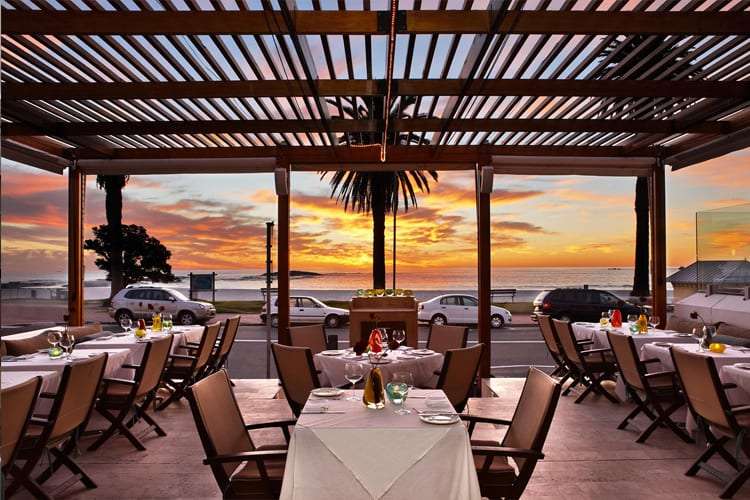Choosing the perfect name for your restaurant is a crucial step in establishing your brand identity and attracting customers. Your restaurant’s name should reflect your concept, cuisine, and personality, all while standing out in a competitive market. In this blog, we’ll explore the art of naming a restaurant and provide some creative examples to inspire your culinary venture.
The Importance of a Great Restaurant Name
Before diving into the process of choosing a restaurant name, it’s essential to understand why this decision is so significant. A name is often the first impression a potential customer has of your establishment. It can convey a sense of the restaurant’s ambiance, menu, and overall experience. A well-chosen name can set the stage for a successful restaurant. Here are some key points to consider:
Brand Identity:
Your restaurant’s name is an integral part of your brand. It should encapsulate what makes your restaurant unique and memorable.
Relevance:
The name should relate to the cuisine or theme of your restaurant. This helps customers understand what to expect when they dine with you.
Uniqueness:
In a crowded market, a distinctive name can help your restaurant stand out. It should be memorable and easy to pronounce.
Emotional Appeal:
A great name can evoke emotions and create a connection with potential customers. It should make people feel something, whether it’s excitement, curiosity, or nostalgia.
Legal Considerations:
Ensure that the name you choose is legally available, not trademarked by another business, and doesn’t infringe on any copyrights.
Steps to Choose a Creative Restaurant Name
Now that you understand the significance of your restaurant’s name, here’s a step-by-step guide to help you choose a creative and meaningful name:
Define Your Concept
Before brainstorming names, you need to have a clear understanding of your restaurant’s concept. What type of cuisine will you offer? What will be the ambiance and decor? Are there any unique features or themes that set your restaurant apart? Knowing these details will help you narrow down your options.
Example: Suppose you plan to open a seafood restaurant with a coastal theme. Your concept may include a focus on fresh catches, a nautical decor, and a relaxed beachside ambiance.

Brainstorm
Gather a creative team or brainstorm with friends and family. Start by listing words or phrases related to your concept, cuisine, and values. Explore synonyms, metaphors, and symbolism to find inspiration. Don’t be afraid to think outside the box.
Example: Gather your creative team and brainstorm related words and phrases. For the seafood restaurant concept, think of words like “ocean,” “wave,” “mariner,” “seashell,” “pier,” or “clam.”
Keep it Short and Memorable
Short and simple names are often easier to remember. A name that’s too long or complicated can be forgettable and challenging for customers to share with others. Think of some of the most famous restaurant names, like “McDonald’s” or “Starbucks” – they’re short and catchy.
Example: For your seafood restaurant, consider names like “Seaside Eats” or “Catch & Tide.” These names are short, easy to remember, and evoke a coastal vibe.
Consider Your Target Audience
Think about your ideal customer. What kind of name would resonate with them? A family-friendly restaurant might opt for a name that’s warm and inviting, while a trendy, upscale eatery may choose something more sophisticated.
Example: If your seafood restaurant caters to families, you might choose a warm and inviting name like “Family’s Catch Shack.” If it’s an upscale eatery, a more sophisticated name like “Mariner’s Bistro” could be suitable.
Test the Name
Once you’ve brainstormed a list of potential names, test them out. Say the name out loud, write it down, and ask others for their opinions. How does it make you feel? Does it reflect your restaurant’s identity and concept?
Example: “Catch & Tide.” Say it out loud, write it down, and ask friends for their opinions. Does it make you envision a seafood restaurant by the coast? Does it convey the right ambiance?
Note:- These examples showcase the process of choosing a restaurant name for a seafood-themed establishment. The steps can be adapted to fit the unique concept and audience of your restaurant. Remember that the name you choose should align with your vision and values, making it easier for customers to connect with your brand.
Research Legalities
Before finalizing your choice, conduct a thorough search to ensure the name is not already in use by another restaurant or trademarked. Failing to do this could lead to legal issues down the road.
Creative Restaurant Name Examples:
To further inspire your naming process, here are some examples of creative restaurant names, each with a different concept and style:
Farm & Fire Grill:
A name that combines the idea of farm-fresh ingredients and a fiery cooking technique, conveying a rustic, farm-to-table vibe.
Saffron Spice Bistro:
This name hints at exotic flavors and a vibrant dining experience, ideal for a restaurant serving Indian or Middle Eastern cuisine.
Whisk & Whimsy Café:
Perfect for a whimsical, dessert-centric café with a playful atmosphere and imaginative treats.
Pasta Paradiso:
An Italian restaurant name that invokes the image of a paradise of pasta dishes, emphasizing the focus on Italian cuisine.
Urban Harvest Kitchen:
A name that suggests a commitment to using locally sourced, fresh ingredients, catering to health-conscious urban diners.
The Copper Cactus Cantina:
Ideal for a Southwestern-themed restaurant, this name combines the rustic charm of copper with the iconic cactus of the region.
Bao Bliss Bistro:
A catchy name for a restaurant specializing in Asian-style bao buns, promising a delightful dining experience.
Conclusion
Choosing a creative restaurant name is a blend of art and strategy. Your restaurant’s name should resonate with your concept, appeal to your target audience, and leave a lasting impression.
By following the steps outlined in this guide and drawing inspiration from various sources, you can find the perfect name that sets the stage for a successful dining establishment.
“Remember, a great name is just the beginning; the quality of your food, service, and ambiance will ultimately determine your restaurant’s success.”





